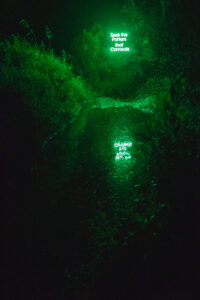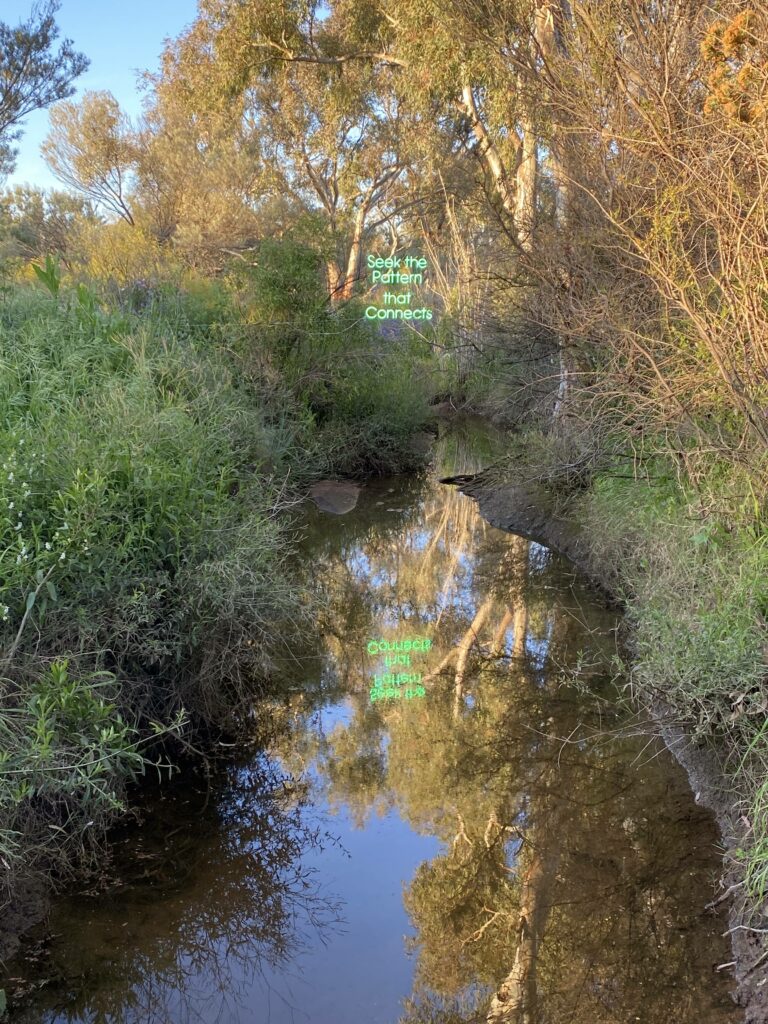Seek the Pattern that Connects
Seek the Pattern that Connects (For Gregory Bateson)
Site-specific, outdoor solar-powered neon sign for “Desert Equinox”, Broken Hill, New South Wales, Australia, Sept-Oct 2022.

“Seek the Pattern that Connects (For Gregory Bateson)” , “Desert Equinox , Broken Hill, NSW,

“Seek the Pattern that Connects (for Gregory Bateson”, (2022)

Seek the Pattern that Connects (for Gregory Bateson), (detail), 2022.
This work, dedicated to the anthropologist, cyberneticist and environmental pioneer Gregory Bateson (1904–1980), presents a solar-powered neon text of Bateson’s famous phrase ‘the pattern that connects’ in the desert night.
In Steps to an Ecology of Mind (1972) and Mind and Nature: A Necessary Unity (1979) Gregory Bateson put forward his concept of ‘ecology of mind,’ which points to a communicative interconnection between all living organisms. Bateson’s concept of the ‘cybernetic mind’ describes an immanent, self-organising informational ‘pattern that connects’ everything to everything else. He seeks to explain the relationship between mind and nature, describing mental processes as a sequence of interactions between things. The radical ideas that Bateson put forward had – and still have – wide implications, not only for science but also for culture and for the development of an ecological aesthetics with interconnections and relationships to the natural world. As Peter Harris-Jones explains in a recent article on the aesthetic implications of Bateson’s ideas:
Bateson’s ecological aesthetics is participatory.… concerned with habitat, and habitat change. Its focus lies in how people perceive change in an ever-transforming ecology. Beyond this, human perception of nature is linked to human conception of nature and thus, by implication, to human survival. (Peter Harris-Jones, ‘Gregory Bateson and Ecological Aesthetics: An Introduction’)
My installation seeks to connect to Bateson’s ideas by creating a work that draws attention to its functioning – through the interconnections of its components – and to the central role of the viewer in their engagement with the work, its purpose and its relationship to the location. I see the entire installation as a kind of cybernetic system that includes the viewer and their relationship to the functioning and meaning of the work.